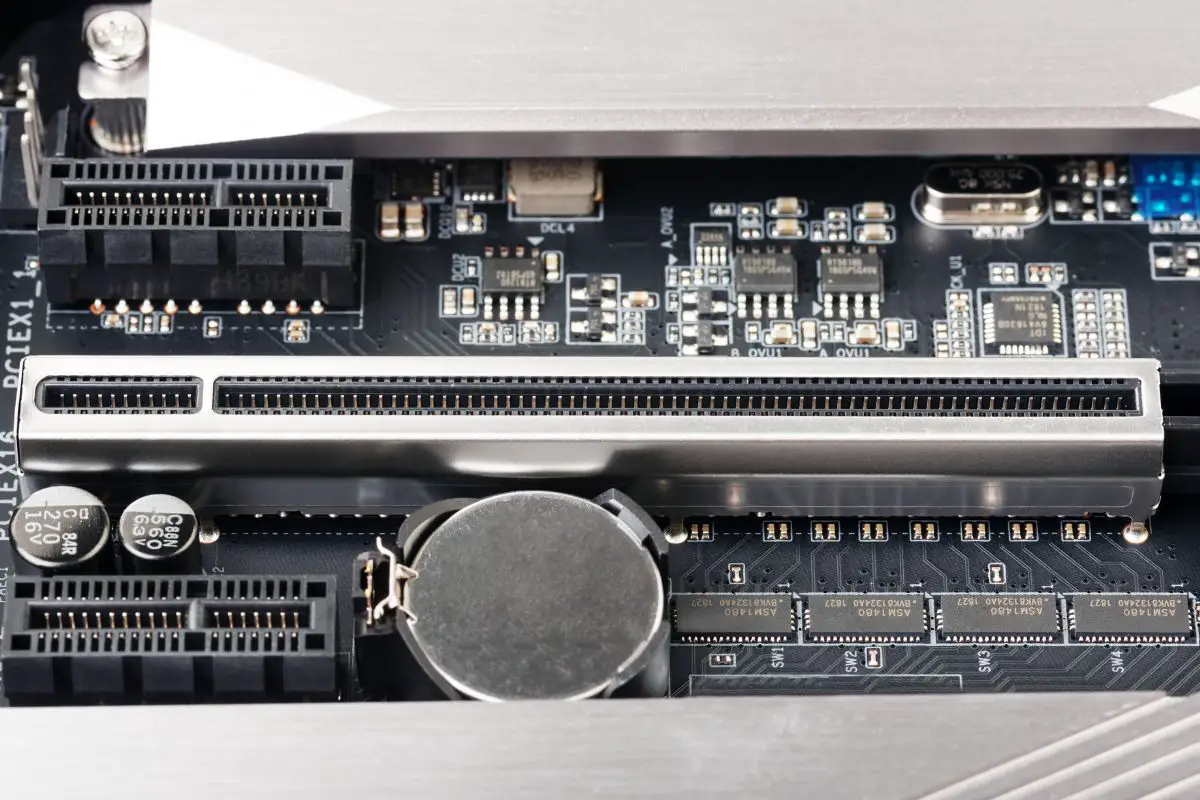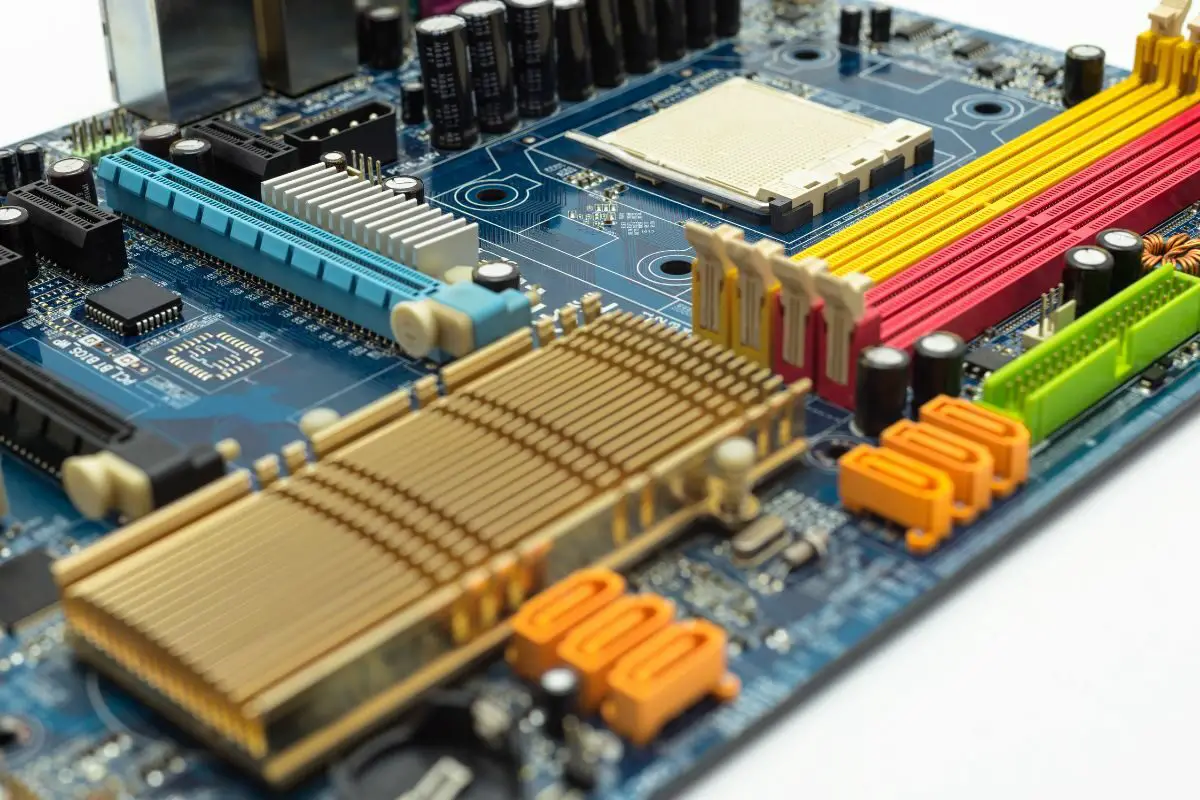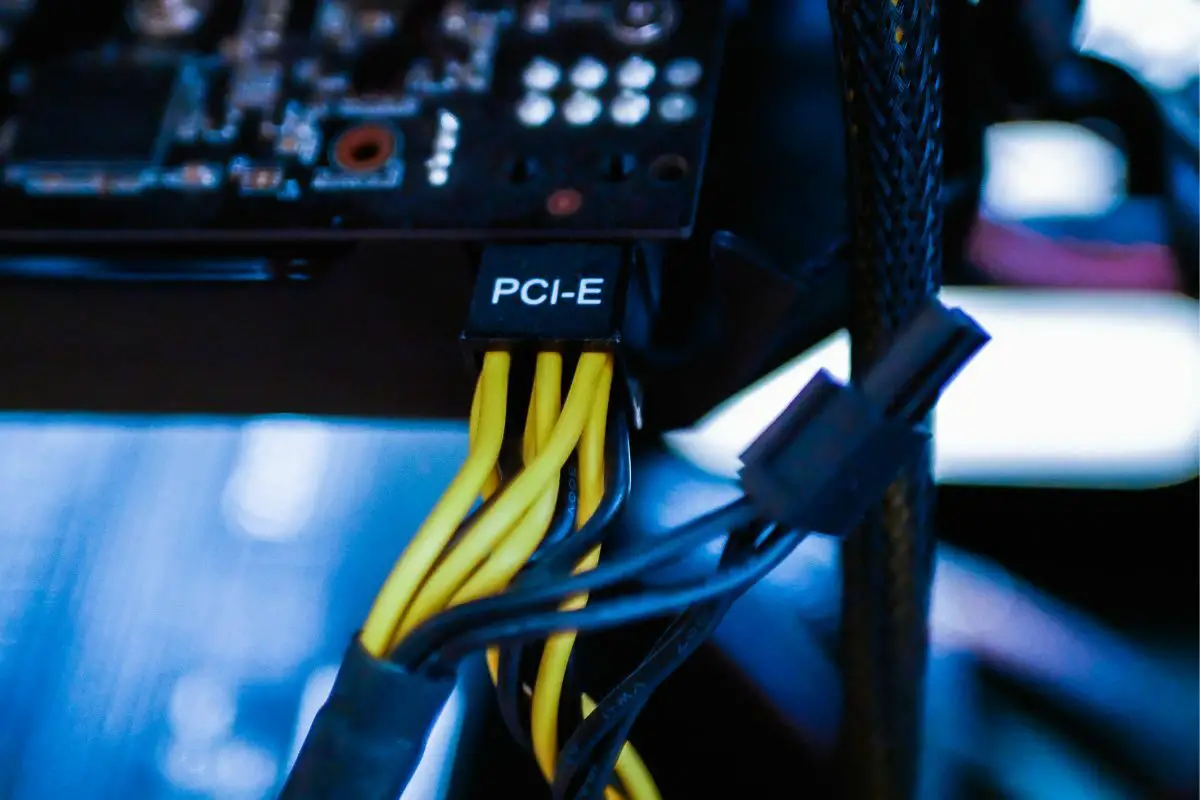
PCIe X1 slots are used to connect expansion cards, like sound cards, USB port expansion cards, network cards, TV tuner cards, and even video capture cards to the motherboard. They're smaller compared to other PCIe slots, so are perfect for expansion cards that have lower bandwidth requirements.
If you're thinking of installing an expansion card, like a sound card, knowing the PCIe lane that you're supposed to use is very important. They each come with their own speeds, so you need to know what you're dealing with. My cousin learned this the hard way, as he kept trying to plug a graphics card into an X1 slot when it needed the x16 type.
To avoid situations like this, you can read my run-down on PCIe X1 slots, and how they compare with other PCIe generations below.
Sound good?
Contents
As I said, you can use PCIe X1 slots on expansion cards that have lower bandwidth requirements, like sound cards or TV tuner cards.
Let's take a look at all the uses for the PCIe expansion slots below.

Most motherboards have built-in sound cards, but if you're an audiophile, you might want better audio quality from your computer. You can a plug sound card in if this is what you want. These cards have low bandwidth requirements, so they are used with PCI Express 1 slot.
Weaker wireless network cards have to be plugged into the PCIe X1 slots. But more powerful 10 G Ethernet cards might need PCIE X4 slots. Although there are some that can work on X1 slots as well.
TV cards let you play different TV stations on your computer, and they need PCI express x1 slots to work.
Video capture cards convert video signals into digital data that can be stored on your computer. You can plug in a regular Full-HD video capture to a PCIe X1 slot. But more powerful 4K capture cards need PCIe X4 slots, due to the increase in bandwidth speed.
If you're not happy with the number of USB ports you have, you can install a USB port expansion card into your motherboard. You'll only need PCIe X1 slots to add more USB ports.
You have to use your computer's SATA ports to attach hard drives. But if you don't have as many SATA ports as you'd like, you can install a special SATA expansion card into your motherboard. SATA Expansion cards use the PCI express X1 slots.
PCIe riser cards are also known as splitters, and you can install these expansion cards if you want to increase the number of PCIe slots on your motherboard.
Make no mistake that although you'll increase the number of PCIe slots, you won't increase your PCIe lane count. So, if you split a X1 slot into four X1 slots, you won't end up with a throughput of X4 lanes.
When you utilize PCIe Riser cards, the new PCIe expansion slots will have a combined maximum output of the host slot that you decided to cut.
PCIe stands for peripheral component interconnect express, and it's the standard for connecting high speed devices to your computer's motherboard. PCIe slots come in multiple sizes, with the X1 type being the smallest. Most motherboards come with large X16 slots, along with X4 and X1 ones too.
You might now be wondering what the difference between each of the PCIe slots are. This comes down to their PCIe data lanes, which you can think of as the highways that speed up the connection with the motherboard.
If you take a look at a PCIe 16 slot, it has the most lanes, so it's the fastest. Plus, it's the biggest too, which means it can handle bigger expansion cards.
In contrast, PCIe x1 slots have only one PCIe lane, so they're the smallest PCI express slots you can get. This makes them suitable for expansion cards that have lower bandwidth requirements, like a TV tuner card, or video capture card.

The thing about the PCI express interface is that most PCs only have a total of 20-24 PCIe lanes. 16 of them are reserved for the graphics card, while the remaining lanes are distributed evenly on a single X4 slot and four X1 slots.
There are also different PCIe generations, for each of the PCI Express slots, with each of them having different speeds. Generally speaking, each new PCIe version has double the per-lane transfer speed. So, not all X1 slots are the same. You can figure out what version you're using through the CPU-Z tool. Here's what you do:
You can also check out this table to learn more about their speeds.
| Version | X1 (GB/s) | X2 (GB/s) | X4 (GB/s) | X8 (GB/s) | X16 (GB/s) |
|---|---|---|---|---|---|
| 1.0 | 0.250 | 0.500 | 1.000 | 2.000 | 4.000 |
| 2.0 | 0.500 | 1.000 | 2.000 | 4.000 | 8.000 |
| 3.0 | 0.985 | 1.969 | 3.938 | 7.877 | 15.754 |
| 4.0 | 1.969 | 3.938 | 7.877 | 15.754 | 31.508 |
| 5.0 | 3.938 | 7.877 | 15.754 | 31.508 | 63.015 |
| 6.0 | 7.877 | 15.754 | 31.608 | 63.015 | 126.031 |
Answered below are some popular questions.
Most of the time, this problem pops up when you're dealing with a broken X1 PCIe slot. Take a look at its pins - if they're bent, you definitely are dealing with some kind of damage. Contact the store you got the computer or motherboard from: they should be able to fix the problem for free, depending on your warranty.
Also, check whether there is dust and debris between the pins. They might not be letting you fit the card in properly. You can get rid of them with a compressed air-can and microfiber sloth.
As long as you have enough X1 slots, you can install as many expansion cards onto your motherboard as you want. But of course, you will only be able to do this if your motherboard supports the number of devices that you want to plug in.
Even if you have the available PCIe slots, keep in mind that installing a lot of expansion cards would increase your computer's power consumption. Think about whether this would be a good idea.
Yes, PCIe X1 slots are faster than PCIs. They overall have higher bandwidth speed, and greater flexibility. This all comes down to the one express lane that they have. No surprise, the X4, X8 and X16 slots are way faster compared to regular PCI.
Like I said, there are different generations of PCIe X1 slots. You need to be mindful of the exact generation that your expansion card needs. You should be able to find this information out from its packaging or product description. With this in mind, go through the CPU-Z tool to find out what generation of PCIe you have running.
PCIe cables are special cables that you add to PCIe cards, like Graphics cards, if you have to send them extra power. You do this when they're too power-hungry for your computer's CPU to handle itself.
There actually are a couple of different PCIe cables on the market. So, you have to be mindful of the one you need first. To do this, you'll have to check your PCIe card's product description. So, if it has a two 8-pin requirement, you will need two 6+2 power cables or two 8-pin cables.
Also, you have to be careful when plugging PCIe cables into place. You'll have to check the clip on your power connectors, and then make sure that they line up with the slots on the card that you are attaching.

Like I said, there are different cable types, and they include the 6-pin, 8-pin, 6+2 pin, 12 pin, and pig-tail cable types.
6-pin cables are the smallest of the bunch and can provide around 75 W of power, while the 8-pin cable type can supply 150 watts.
The 6+2 cables are essentially 8-pin cables, but they're made up of separate 6 and 2 pin that you can attach together to make an 8-pin cable when needed. No surprise, the 12-pin type can supply the most power, as they can supply up to 600 watts to your PCIe card.
PCIe X1 slots can be used with all kinds of cards and devices that have low bandwidth requirements, like TV cards, video capture cards, and USB expansion cards. Many users think that they can install graphics cards into the slots, but this actually isn't the case - they will need the more powerful PCIe x16 slot (it has more lanes and a higher bandwidth speed)
While running through everything you can use the PCIe Express slots for, I also discussed the different PCIe slot generations, and what really differentiates them.
Hopefully, you found all of the points that were run through useful.
